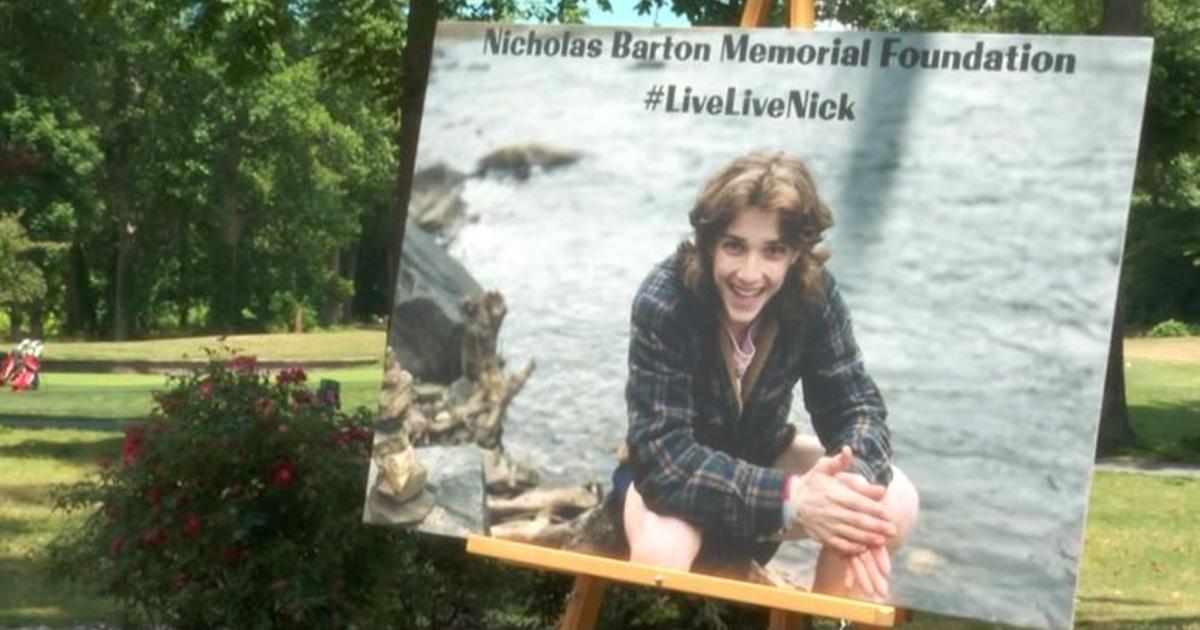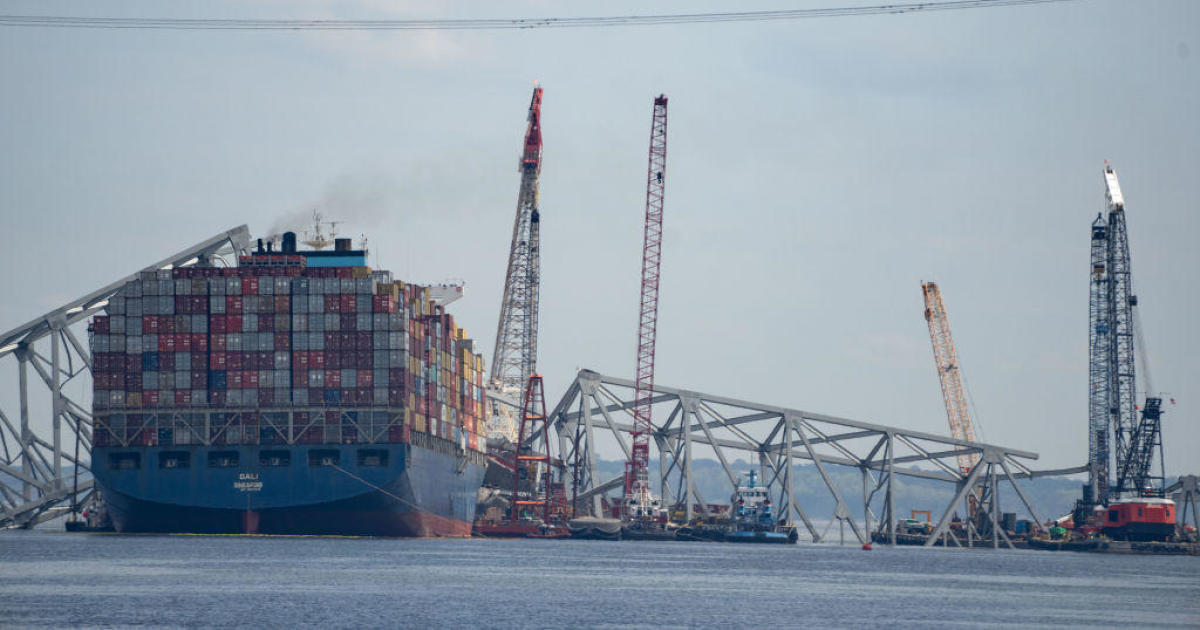Hurricane Maria Lashes Dominica, Now Menaces Other Islands
ROSEAU, Dominica (AP) — Hurricane Maria smashed into Dominica with catastrophic winds, leaving what one official described Tuesday as "widespread devastation" from the monster storm now threatening Caribbean islands already ravaged by Hurricane Irma.
Dominica Prime Minister Roosevelt Skeritt said on his Facebook page while the Category 5 storm was raging over his island nation that he would venture out to see the damage and secure needed help once the all-clear was given. He said his "greatest fear" was that island residents would awake to word of "serious physical injury and possible deaths."
At one point, he lost the roof to his own official residence to fierce winds he also said had torn away the roofs of many others. The initial focus, he said, would be on rescuing trapped people and securing medical aid for the injured. Maria's eye roared over the island late Monday night before the storm briefly dropped to Category 4 strength early Tuesday before resuming its extremely dangerous Category 5 status.
Fierce winds and driving rain lashed mountainous Dominica for hours. A police official on the island, Inspector Pellam Jno Baptiste, said late Monday night that there were no immediate reports of casualties but it was too dangerous for officers to do a full assessment as the storm raged outside.
"Where we are, we can't move," he said in a brief phone interview late Monday night while hunkered down against the region's second Category 5 hurricane this month.
Maria weakened briefly before dawn Tuesday to a still major Category 4 storm after its rampage over Dominica. But the fluctuation in intensity proved short-lived as a hurricane hunter plane reported the storm had regained its fearsome Category 5 status within hours.
Skerrit earlier had captured the fury of Maria as it made landfall, the eye passing over the island. "The winds are merciless! We shall survive by the grace of God," Skerrit wrote at the start of a series of increasingly harrowing posts on Facebook.
A few minutes later, he messaged he could hear the sound of galvanized steel roofs tearing off houses on the small rugged island.
He then wrote that he thought his home had been damaged. And three words: "Rough! Rough! Rough!"
A half hour later, he said: "My roof is gone. I am at the complete mercy of the hurricane. House is flooding." Seven minutes later he posted that he had been rescued.
Officials in Guadeloupe said the French island near Dominica probably would experience heavy flooding and warned that many communities could be submerged. In nearby Martinique, authorities ordered people to remain indoors and said they should be prepared for power cuts and disruption in the water supply.
Authorities in the U.S. territory of Puerto Rico, which faced the possibility of a direct hit, warned that people in wooden or flimsy homes should find safe shelter before the storm's expected arrival there on Wednesday.
"You have to evacuate. Otherwise, you're going to die," said Hector Pesquera, the island's public safety commissioner. "I don't know how to make this any clearer."
Maria had maximum sustained winds of 160 mph (260 kph) late Monday when it slammed into Dominica before dipping for a time to a Category 4 major storm.
The U.S. National Hurricane Center said Maria's top sustained winds then returned to 160 mph (260 kph) strength shortly before daybreak Tuesday with the eye of Maria located about 65 miles (100 kilometers) west-southwest of Guadeloupe. The storm was moving west-northwest over the Caribbean at 9 mph (15 kph).
Fluctuations in intensity were expected, and forecasters have warned Maria would likely intensify over the next 24 hours or longer, noting its eye had shrunk to a compact 10 miles across and warning: "Maria is developing the dreaded pinhole eye."
That generally means an extremely strong hurricane will get even mightier, said Brian McNoldy, a hurricane researcher at the University of Miami. He said it just like when a spinning ice skater brings in their arms and rotates faster.
"You just don't see those in weaker hurricanes," he said.
The storm's hurricane-force winds extended out about 35 miles (45 kilometers) and tropical storm-force winds out as far as 125 miles (205 kilometers).
Hurricane warnings were posted for the U.S. and British Virgin Islands, Puerto Rico, Guadeloupe, Dominica, St. Kitts, Nevis and Montserrat. A tropical storm warning was issued for Martinique, Antigua and Barbuda, Saba, St. Eustatius, St. Maarten, St. Lucia and Anguilla.
Forecasters said storm surge could raise water levels by 6 to 9 feet (1.8 to 2.7 meters) near the storm's center. The storm was predicted to bring 10 to 15 inches (25 to 38 centimeters) of rain across the islands, with more in isolated areas.
The current forecast track would carry it about 22 miles (35 kilometers) south of St. Croix in the U.S. Virgin Islands late Tuesday and early Wednesday, territorial Gov. Kenneth Mapp said.
"We are going to have a very, very long night," Mapp said as he urged people in the territory to finish any preparations.
St. Thomas and St. John are still stunned from a direct hit by Hurricane Irma, which did extensive damage and caused four deaths on the two islands.
Barry University said it chartered a private plane to carry students and staff from its St. Croix facility to Florida in preparation for Maria. It said 72 people connected to the Barry's Physician Assistant Program and a few pets were on Monday's evacuation flight.
In neighboring Puerto Rico, nearly 70,000 people were still without power following their earlier brush with Irma and nearly 200 remained in shelters as Maria approached.
Gov. Ricardo Rossello said Puerto Rico had 500 shelters capable of taking in up to 133,000 people in a worst-case scenario. He also said the Federal Emergency Management Agency was ready to bring drinking water and help restore power immediately after the storm, which could hit as a Category 5 hurricane.
"That is catastrophic in every way," said Roberto Garcia with the National Weather Service in San Juan. "People have to act, and they have to act now. They can no longer wait for a miracle."
To the north, Hurricane Jose stirred up dangerous surf and rip currents along the U.S. East Coast, though forecasters said the storm was unlikely to make landfall. Big waves caused by Jose swept five people off a coastal jetty in Rhode Island and they were hospitalized after being rescued.
A tropical storm warning was posted for coastal areas in Rhode Island and Massachusetts, and tropical storm watches were up for parts of New York's Long Island and Connecticut. Jose's center was about 365 miles (590 kilometers) south of Nantucket, Massachusetts, early Tuesday and moving north at 9 mph (15 kph). The storm had maximum sustained winds of 75 mph (120 kph).
Follow @CBSBaltimore on Twitter and like WJZ-TV | CBS Baltimore on Facebook
(© Copyright 2017 The Associated Press. All Rights Reserved. This material may not be published, broadcast, rewritten or redistributed.)



